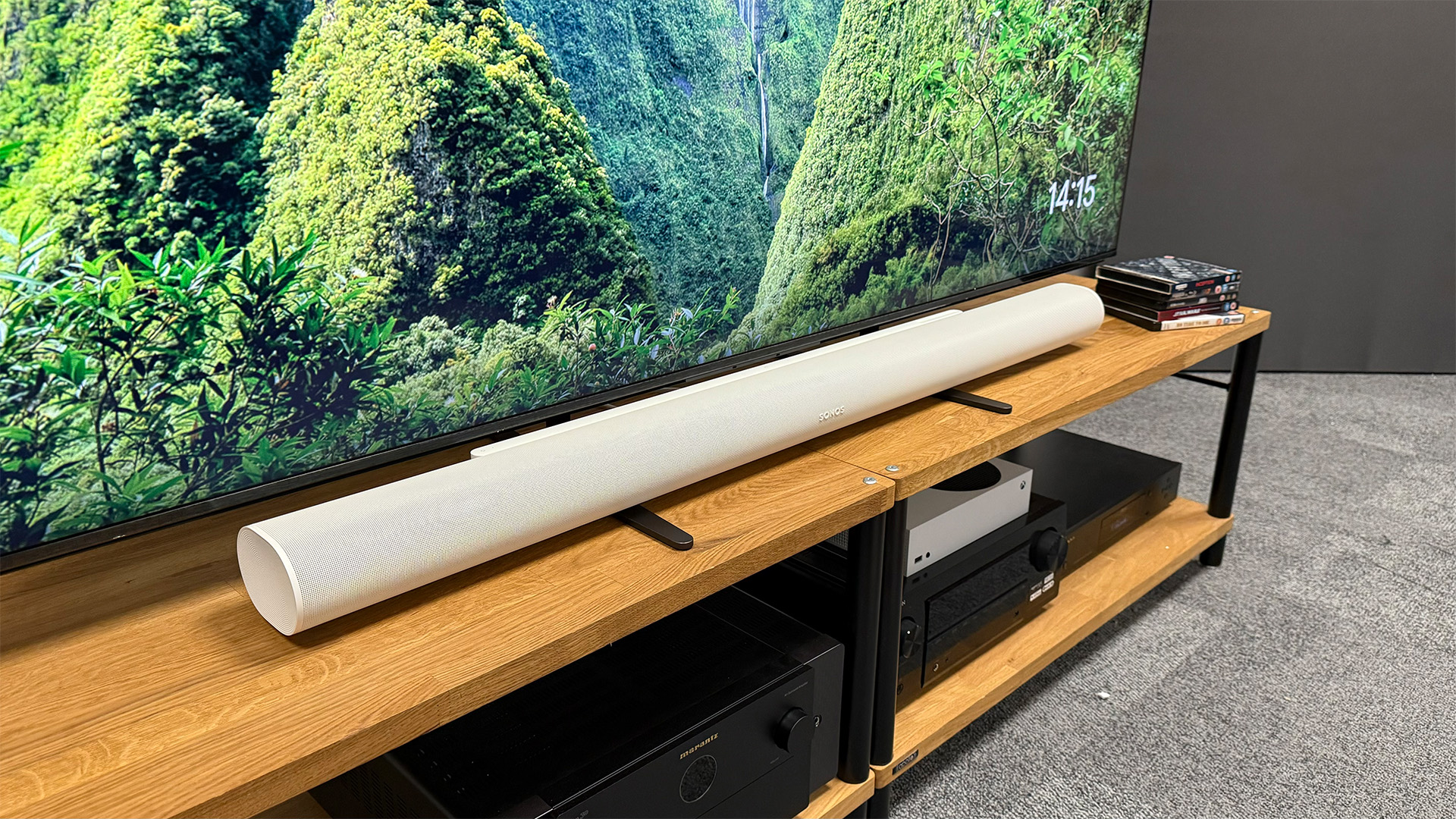Marshall Heston 120 vs Sony Bravia Theatre Bar 9: which soundbar should you buy?
Marshall's first soundbar squares up against Sony's Award-winning flagship
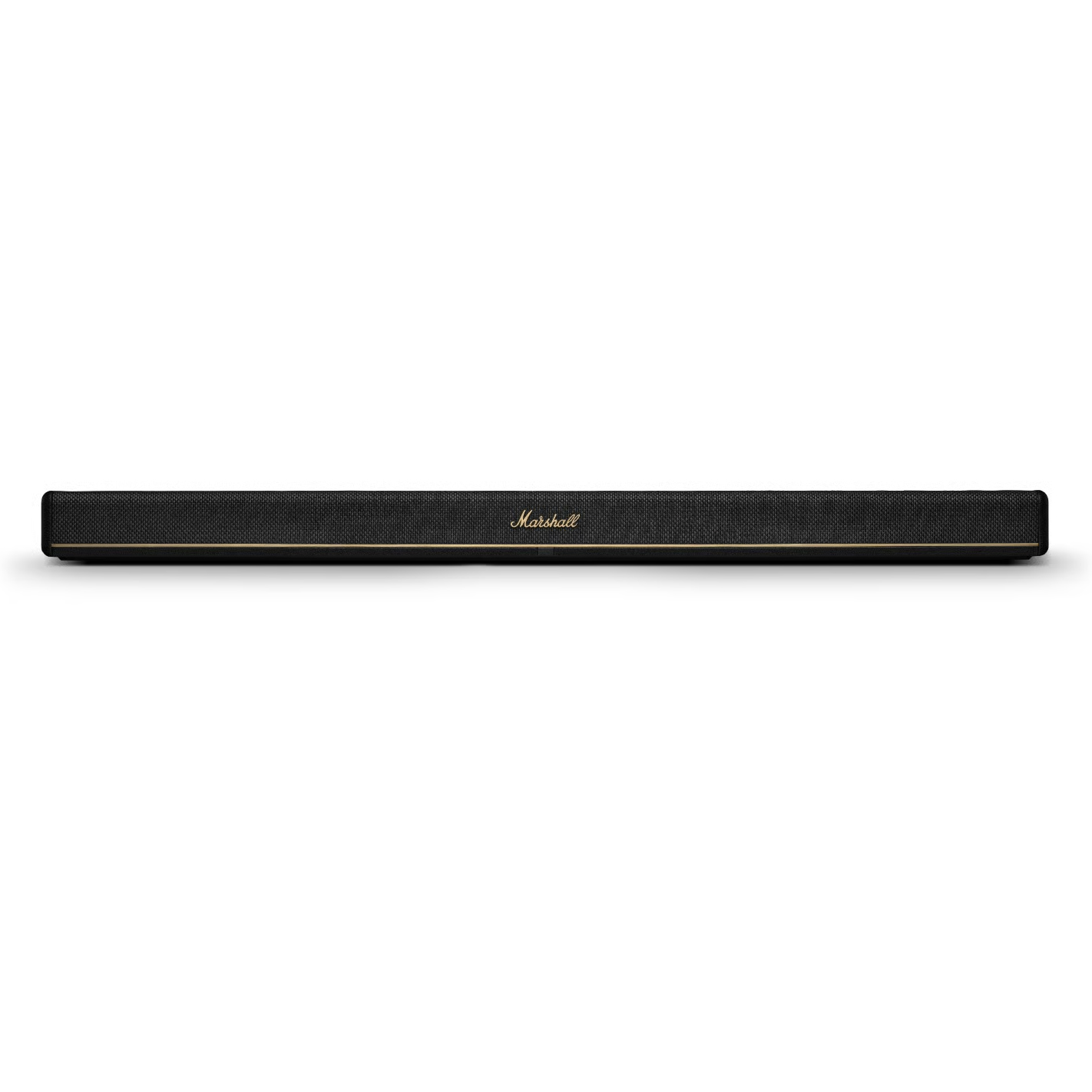
Connectivity: HDMI eARC, HDMI 2.1 input, stereo RCA, subwoofer out, Bluetooth 5.3, wi-fi
Format support: Dolby Atmos, DTS:X
Bluetooth: 5.3
Streaming: Google Cast, AirPlay, Spotify Connect, Tidal Connect
Dimensions (hwd): 7.6 x 110 x 15cm
As a first try, the Heston 120 isn't bad at all. It looks distinctive, has plenty of features and isn't too unreasonably priced. It's just that the sound isn't a patch on its Award-winning rival. One for the Marshall purists only, sadly.
Pros
- Clear and detailed dialogue
- Decent amount of bass
- Unique design with tactile knobs
Cons
- Sound lacks dynamics and punch
- Slightly bright, sibilant treble
- Weak with Dolby Atmos

Connectivity: HDMI out (eARC), 1 x HDMI 2.1 in, wi-fi, Bluetooth 5.2, AirPlay 2
Format support: Dolby Atmos, DTS:X
Bluetooth: 5.2
Streaming: Spotify Connect, AirPlay
Dimensions (hwd): 6.4 x 130 x 11 cm
Now the price has come down, the Theatre Bar 9 is the clear winner. It might not look as iconic as the Marshall, or support Tidal Connect, but the sound is in a different league. An Award winner through and through.
Pros
- Superb clarity, detail and punch
- Impressive 3D audio processing
- Classy, subtle design
Cons
- Slightly clinical in its delivery
- No display
- Occasionally over-pronounced deep bass
How excited we were to see the first soundbar from legendary amp maker Marshall. The Marshall Heston 120 certainly looks the part, wearing the brand's styling like Noel does his parka.
But style will only get you so far. The Marshall is taking on the Award-winning Sony Bravia Theatre Bar 9 in this head to head. And Sony knows a thing or two about making great soundbars – not only did the Bar 9 win an Award, it replaced the three-time Award-winning HT-A7000.
Gulp.
Can Marshall slay a giant on its first outing? Or will it be left licking its wounds, ready to regroup and have another go?
Marshall Heston 120 vs Sony Bravia Theatre Bar 9: price
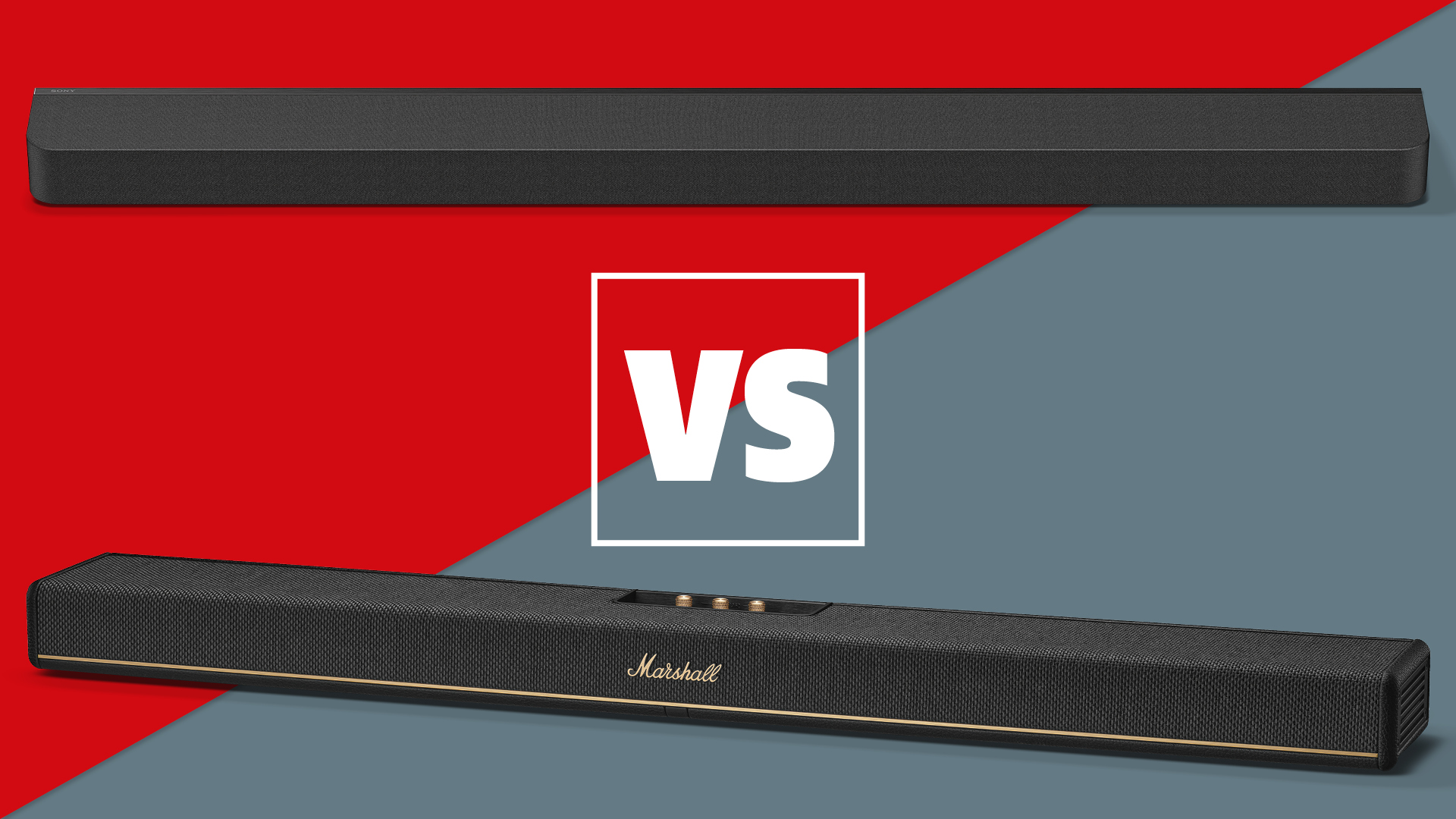
The Marshall Heston 120 costs £899 / $999 / AU$1799, while the Sony Bravia Theatre Bar 9 has an RRP of £1399 / $1400 / AU$1795.
This gives the Marshall an advantage in the US and UK, but makes them pretty equal in Australia.
However, that's not the full story. The Theatre Bar 9 is no stranger to discounts – at time of writing, it sells for £999, which is a full £500 off its launch price. And it has dropped around £20 cheaper than that, albeit briefly. So these two are actually much closer than you might think.
The latest hi-fi, home cinema and tech news, reviews, buying advice and deals, direct to your inbox.
** Winner: Marshall Heston 120 **
Marshall Heston 120 vs Sony Bravia Theatre Bar 9: design and build
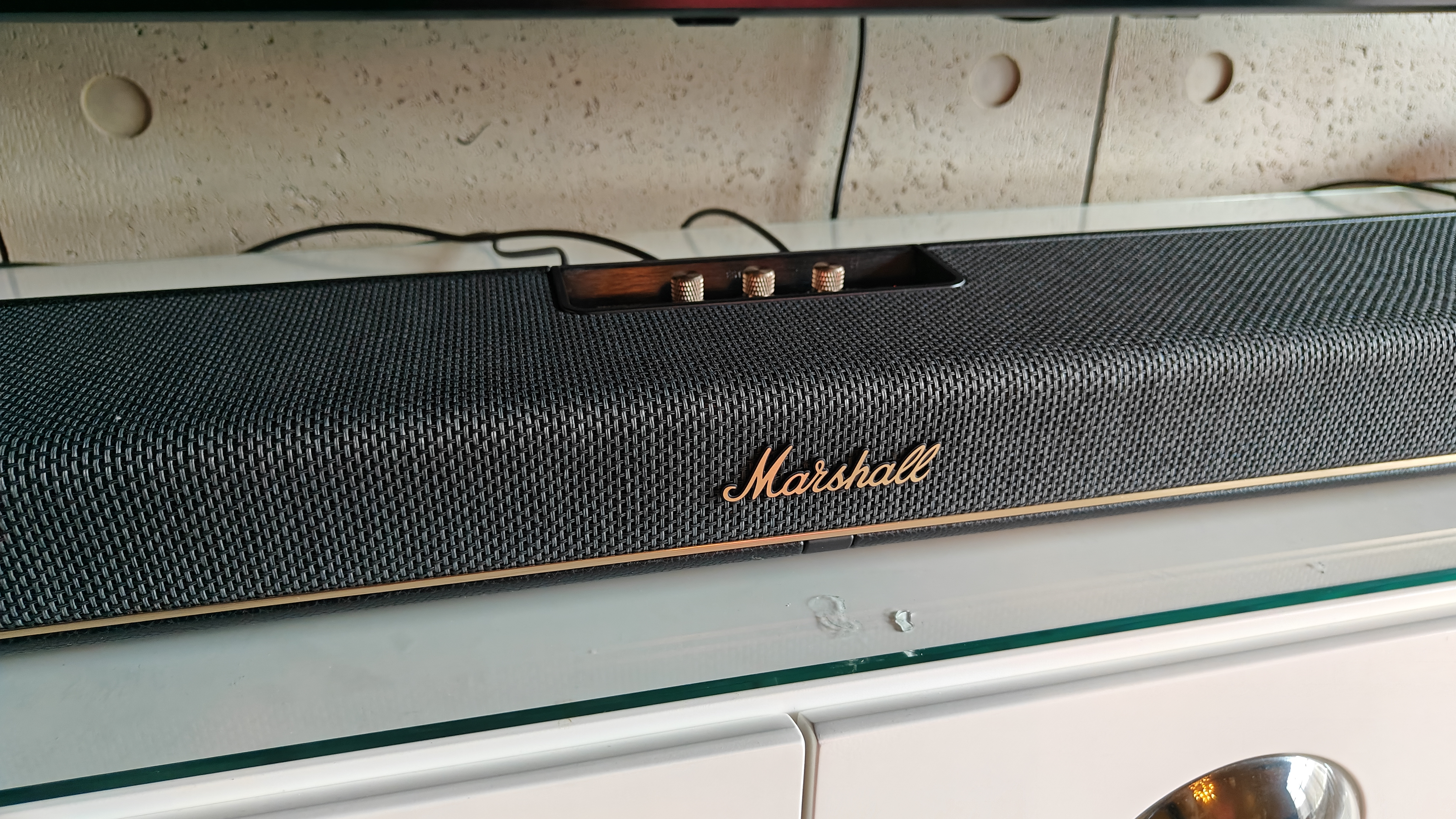
Marshall's Heston 120 measures 110 x 14.5 x 7.6cm and weighs in at 7.04kg. The Theatre Bar 9 is noticeably longer at 130cm, but more compact in height and depth, while weighing 5.5kg. Not that soundbar weight is ever a deciding factor for most people.
Unlike most soundbar comparisons though, the aesthetic differences here are larger than usual, thanks to Marshall imbuing the Heston 120 with the company’s instantly recognisable rock ‘n’ roll flair.
Unapologetically flaunting its amp heritage, Marshall’s debut soundbar brings the whole package to the table, and its parts are replaceable too.
Knurled metal control knobs positioned on the top surface for bass, treble, volume and source adjustments? Check. PU leather trim? Check. Paper fret cloth and brushed metal elements? Check.
It’s Marshall through and through, and also a rarity in the soundbar world, given that its design flair and prominent Marshall logo make the Heston 120 a device that demands your attention.
Where most soundbars tend to have more pared-back designs to blend in and let you focus on the screen, here we have one that's a covetable item in its own right.
Naturally, it won’t suit all tastes. But if you dig the Marshall aesthetic (and/or want something that breaks the mould), you’ll be pleased with the design team's efforts.
Sony's Theatre Bar 9 takes a more traditional, minimalistic approach, with a fabric-covered design that shrouds 90 per cent of the device for a far more discrete look, bolstered by its soft, rounded corners.
There is also a stark contrast in the controls department. The Theatre Bar 9 has just one physical control – a power button on the metal frame's right end.
Elsewhere, handy spacers are included for positioning around TV stands, plus a wall-mounting bracket.
Both units are at opposite ends of the design spectrum, and which one you prefer will come down to personal preference. But for its ability to stand out from a sea of lookalikes, we give this round to the Marshall.
** Winner: Marshall Heston 120 **
Marshall Heston 120 vs Sony Bravia Theatre Bar 9: features and connectivity

Neither soundbar is light on features. The Heston 120 delivers comprehensive connectivity options in the form of HDMI eARC, along with HDMI pass-through that supports 4K/120Hz with Dolby Vision HDR – valuable for gaming setups.
Wireless capabilities include Wi-Fi 6 with Google Cast, AirPlay 2, Spotify Connect and Tidal Connect, along with Bluetooth 5.3 featuring LE-audio technology, and Auracast. Additional inputs include analogue RCA (ideal for turntables), Ethernet, and USB-C connectivity.
Marshall’s audio format support covers both Dolby Atmos and DTS:X, while under the hood, you’ll find an 11-driver configuration with a 5.1.2 arrangement – five full-range drivers, two tweeters, two mid-woofers, and two subwoofer units.
Power comes from 11 Class D amplifiers – two 50W and nine 30W units – providing 150W peak output.
The Marshall app also handles EQ adjustments and room calibration via two integrated microphones, while four preset sound modes (Music, Movie, Night, Voice), cater to different types of content.
Sony's Theatre Bar 9 employs a more complex driver array, with 13 individual drivers paired with quad passive radiators.
The front section houses four woofers, three standard tweeters and two beam tweeters, with side-firing speakers on each end, and two up-firing drivers in addition to passive radiators on top.
Sony's 360 Spatial Sound Mapping creates virtual speaker placement, while Sound Field Optimisation uses smartphone-based room measurements to tweak things for optimal performance.
Connectivity, however, is a little more limited on the Sony, which lacks an RCA option. HDMI eARC provides the main connection, with one additional HDMI 2.1 input supporting 4K/120Hz, VRR and ALLM.
Wireless options include Spotify Connect, AirPlay 2 and Bluetooth 5.2, though unlike the Marshall, Tidal Connect isn't supported.
** Winner: Marshall Heston 120 **
Marshall Heston 120 vs Sony Bravia Theatre Bar 9: sound

Sony's Theatre Bar 9 earned a well-deserved five stars for its sonic performance in our review, along with an Award accolade, and a spot in our list of the best soundbars.
Our testing revealed a crisp and clean performance, with delivery that's both airy and direct. Its rhythmic and spatial organisation is second to none too, with impressive dynamic range from subtle details to grand volume changes.
During film testing, we noted that the Sony's clarity and organisational ability create a hugely exciting delivery.
Its Dolby Atmos processing also provided “arguably the most Atmos-y delivery we've heard from a solo soundbar," pushing sound far out to the left and right, a long way into the room and right up to the ceiling.
For music playback, the Sony continues to impress with its ability to afford every instrumental and vocal layer space to breathe, while clearly maintaining its tether to the whole.
We did note a slightly clinical character that trades some warmth for enhanced clarity and detail, though this doesn’t detract too much from the superb performance.
Sadly, this round is where the Marshall comes undone. The good news is it does sound better than a TV, with greater weight, body and spaciousness. The bad news? It's not a patch on its Award-winning rival.
It does fare well with voices, making dialogue clear no matter how heated the action becomes. Voices retain their emotional resonance too, thanks to the bar's low-level dynamic subtlety, and it has decent tonal balance and cohesiveness, merging the treble, midrange and bass fluidly.
But there are plenty of negatives, too.
The treble can be bright and plagued by sibilance, bass isn't as deep or nuanced as we had hoped, and it's not a particularly engaging listen. It just lacks the dynamics and punch that make the Sony such a stellar product.
Bigger dynamic shifts fall flat, and leading edges lack solidity. That means that "effects that should be exciting and impactful (the gunfire and explosions in Civil War, for example) end up sounding a bit soft and limp," we wrote in our review.
Its Dolby Atmos delivery is also underwhelming, lacking projection and height. It's all a bit cramped and boxed in.
Given Marshall's musical heritage, you might expect the Heston 120 to fare better with music tracks. But again, you would be disappointed.
Despite changing the preset to Music, the same flaws remain as in Movie mode. Every test track we used – and we used a broad spread – suffers from the same lack of dynamic expression and definition.
Again, it fares better with vocals in music. But the rest of the track sounds pushed rather towards the background.
** Winner: Sony Bravia Theatre Bar 9 **
Marshall Heston 120 vs Sony Bravia Theatre Bar 9: verdict
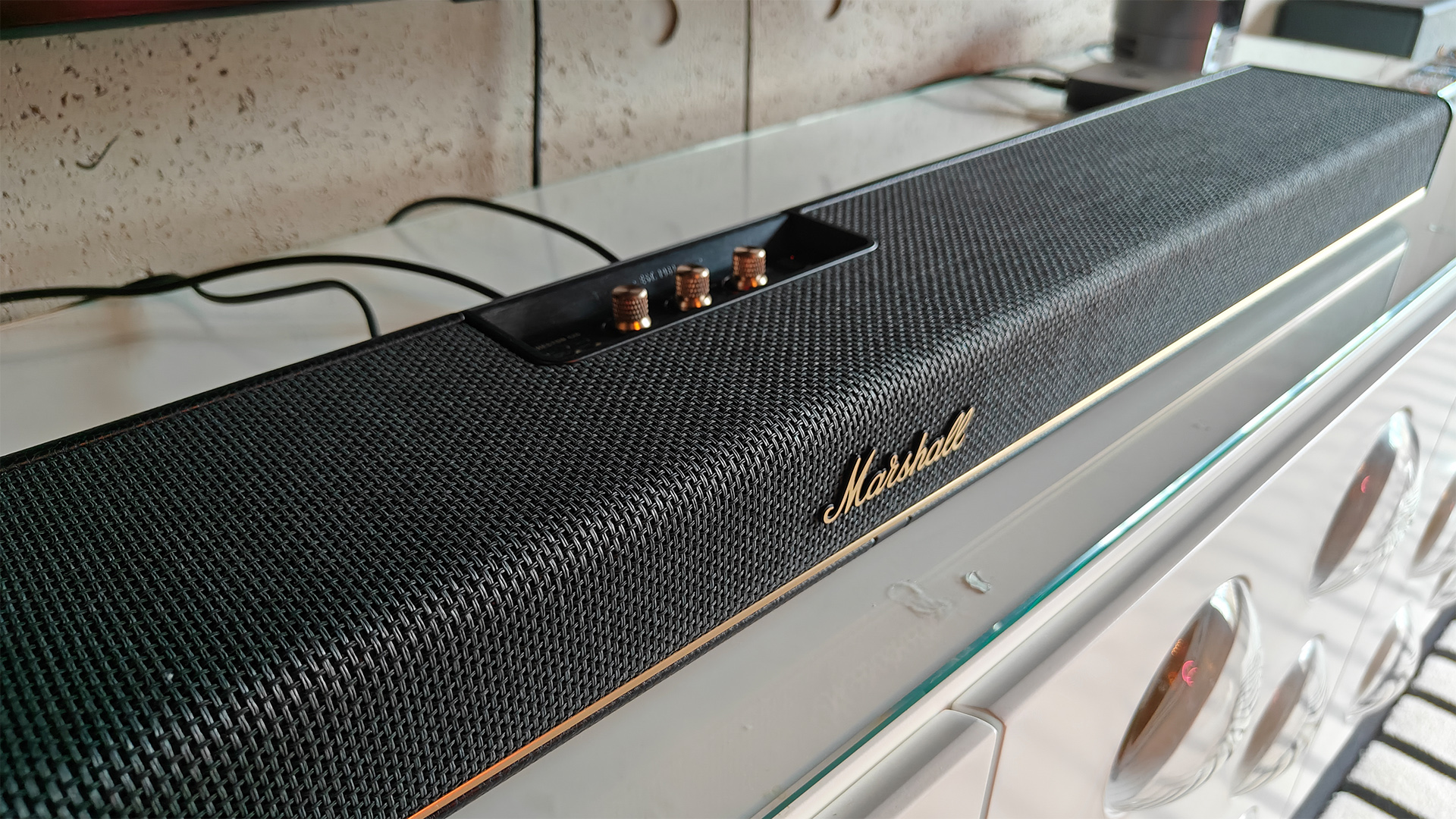
The Heston 120 is by no means a bad soundbar. For a first effort, it's actually quite impressive: it doesn't cost too much, it has bags of features and that iconic Marshall styling.
It's just that Sony has been in this game a long time, and the Bravia Theatre Bar 9 absolutely nails it on the audio front. And that's the one that counts the most.
MORE:
Read our Marshall Heston 120 review
Marshall's first ever Dolby Atmos soundbar has been officially unveiled – but can it dethrone the Sonos Arc Ultra?
Read our Sony Bravia Theatre Bar 9 review
Check out the best Dolby Atmos soundbars

You must confirm your public display name before commenting
Please logout and then login again, you will then be prompted to enter your display name.
